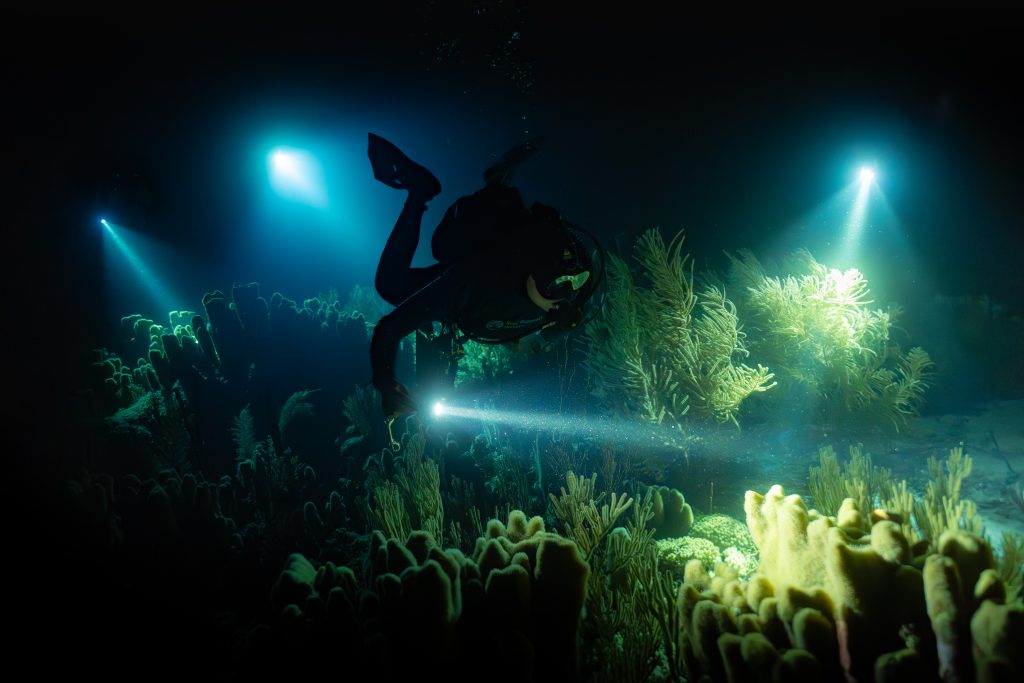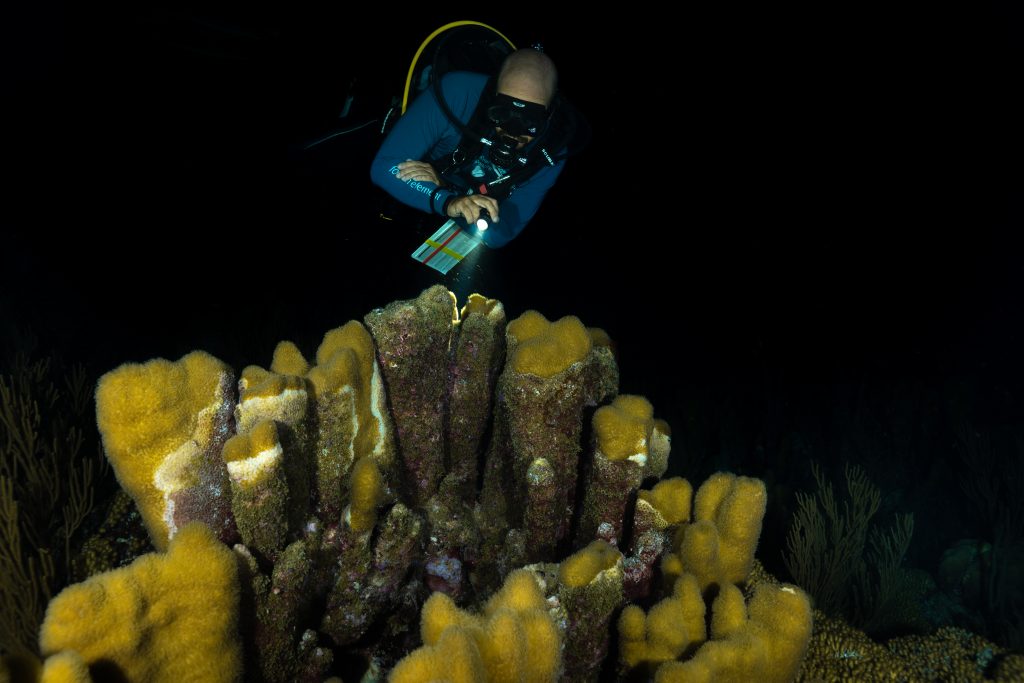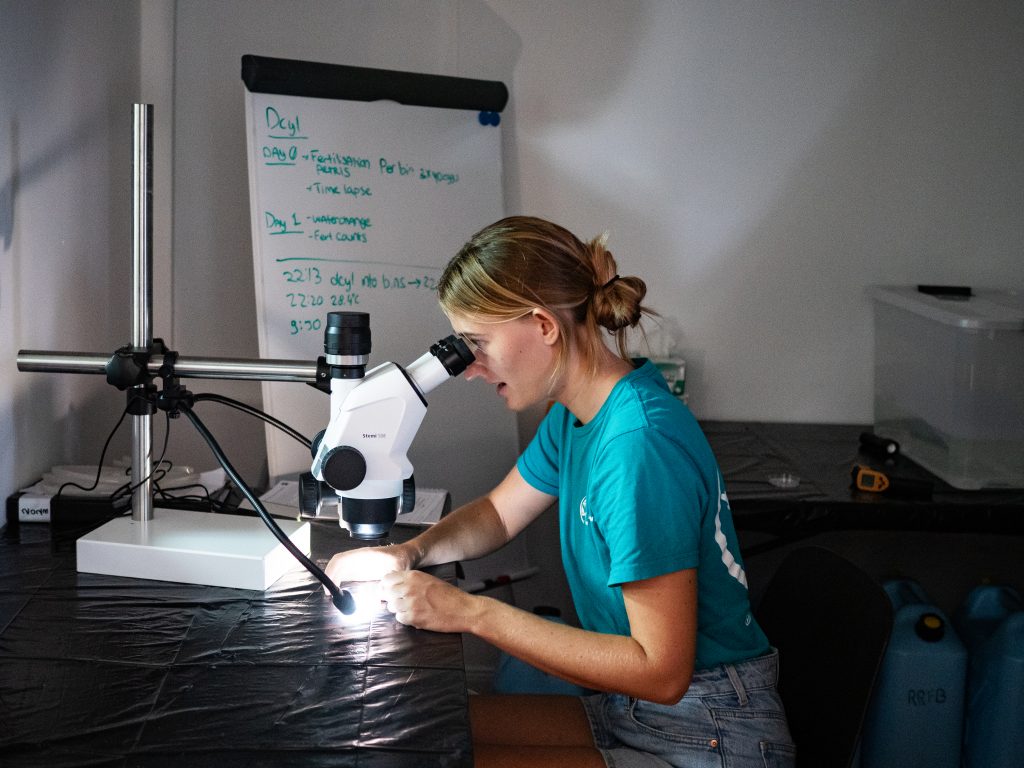Pillar Coral Spawning in Bonaire: A First-Ever Breeding Success Gives Hope for Endangered Reefs
NAUI celebrates another conservation milestone with Reef Renewal Foundation Bonaire, as they achieve a historic breakthrough in coral conservation by raising endangered pillar coral through assisted spawning for the first time on the island.
A Historic First for Bonaire’s Coral Reefs
In an incredible milestone for marine conservation, Reef Renewal Foundation Bonaire (RRFB) has successfully bred pillar coral (Dendrogyra cylindrus) for the first time in the island’s history. This critically endangered species—known for its striking vertical columns—has suffered devastating losses in recent years due to widespread coral bleaching and the rapid spread of Stony Coral Tissue Loss Disease (SCTLD).
This achievement comes at a pivotal time. Only a handful of pillar coral colonies remain on Bonaire’s reefs, and many are now so far apart they can no longer reproduce naturally. With natural spawning virtually impossible, assisted reproduction efforts like this one may be the only lifeline left for the species.

A Historic First for Bonaire’s Coral Reefs
Often referred to as the “canary of the reef,” pillar coral is highly sensitive to changes in ocean temperature and water quality. Their early stress responses make them essential indicators of reef health—but also leave them vulnerable to collapse.
In Florida and across much of the Caribbean, pillar coral populations have already been functionally wiped out. Without active restoration, Bonaire could face the same fate.
That’s why this breeding success matters: it proves that even the most vulnerable species still have a fighting chance—if we act fast and with purpose.
How Coral Breeding Can Save a Species
RRFB’s coral spawning program uses a blend of science, timing, and hands-on expertise. In August 2025, their team collected pillar coral spawn, fertilized it in a controlled lab environment, and began growing young larvae.

The next step? These young corals will be carefully transferred to underwater nurseries and eventually returned to Bonaire’s reefs, bringing new genetic diversity to the struggling population.
This is just one part of a broader restoration strategy that includes:
-
Sexual coral reproduction (breeding from egg and sperm)
-
Coral fragmentation (propagating from live fragments)
-
Monitoring and research to track survival and resilience
Recent studies show that heat-tolerant traits can be passed from parent to offspring, and lab-reared corals often display higher resilience to environmental stress than wild colonies.1,2

Powered by Partnership and Science
This breakthrough was made possible with the support of:
-
Dutch Ministry of Agriculture, Fisheries, Food Quality, and Nature (LVVN) (via the Nos ta Biba di Naturalesa project)
-
FUNDEMAR, a coral conservation partner from the Dominican Republic
RRFB’s collaborative approach allows new coral breeding technologies to be tested and scaled across the Caribbean. In addition to this success, the team recently produced 56,000 staghorn coral larvae and raised 26,000+ grooved brain coral earlier this year.

Why This Matters to NAUI Divers
NAUI Divers are more than just visitors to the ocean; we’re stewards of it!
Understanding coral health, participating in local restoration projects, or even just spreading awareness of conservation efforts like this one can make a measurable impact.
This success story from Bonaire is a perfect example of how science, community, and passionate divers can work together to protect the underwater world we love.
📸 See It in Action
RRFB has provided powerful imagery of this event, from nighttime gamete collection to microscope views of pillar coral larvae settling into new life.
📷 View the high-resolution photo gallery here
(All photos © Reef Renewal Foundation Bonaire / Julian Beccari)
Follow their Journey on Social Media by clicking the buttons below.
Sources and Credits
-
Roach, T. N. F., et al. (2025). Intergenerational metabolomic signatures of bleaching resistance in corals. Nature Communications, 16, 5971. https://doi.org/10.1038/s41467-025-55423-x
-
Miller, M. W., et al. (2024). Assisted sexual coral recruits show high thermal tolerance to the 2023 Caribbean mass bleaching event. PLOS ONE, 19(9), e0309719.
This article is adapted with permission from the original press release issued by Reef Renewal Foundation Bonaire. For more information, visit www.reefrenewalbonaire.org.

Dive Safety Through Education
NAUI Worldwide
🌎 Nonprofit Dive Training & Certifying Agency.🤿






